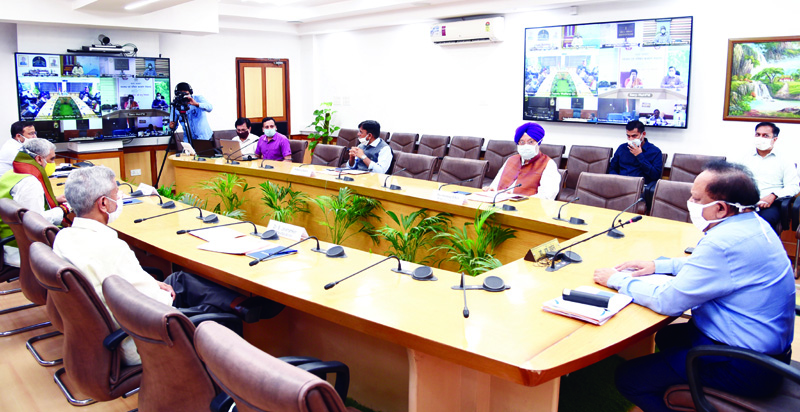
NEW DELHI, July 9: Maharashtra, Tamil Nadu, West Bengal and three other states account for 86 per cent of total Coronavirus deaths, while 32 districts account for 80 per cent of the deaths.
Briefing the high-level Group of Ministers (GoM) on Covid-19 on efforts being made in the regions showing higher Case Fatality Rate, Union Health Minister Harsh Vardhan briefed the GoM on the global comparison between the five most affected countries clearly depicted that India has one of the lowest cases per million (538) and deaths per million (15) compared the global average of 1453 and 68.7, respectively.
Within the country, eight states (Maharashtra, Tamil Nadu, Delhi, Karnataka, Telangana, Andhra Pradesh, Uttar Pradesh and Gujarat) contribute to around 90 per cent of the active caseload and 49 districts accounted for 80 per cent of active caseload. Six states — Maharashtra, Delhi, Gujarat, Tamil Nadu, Uttar Pradesh and West Bengal — account for 86 per cent of total deaths, and 32 districts account for 80 per cent deaths. The GoM was briefed that special efforts were made in the regions showing higher Case Fatality Rate.
”As we move forward to Unlock 2.0, our focus shall be on the management of Covid-19 through strict containment measures and surveillance; utilising full testing capacity; focus on monitoring of co-morbid and elderly population and predicting emerging hotspots leveraging digital tools such as Aarogya Setu,” he said, adding strict perimeter control and with only essential activities was to be allowed, intensive contact tracing, house-to-house search/surveillance and Buffer Zones to be identified outside the Containment Zones to contain potential new cases.
He pointed out that “along with States/UTs, our aim is to reduce and keep the Case Fatality Rate low by early identification and effective clinical management”.
The Centre and state, UT cooperation measures taken at regular intervals include regular visit by Central Teams of public health experts to the most affected states for handholding and supporting States for more effective containment & control measures. The regular VCs chaired by Cabinet Secretary with all States focus on containment of the spread, ramping up the testing and reducing the mortality.
Speaking on the Covid-19 healthcare infrastructure in the country, the GoM was briefed that as on today, there are total 3914 facilities in the country with 3,77,737 Isolation beds (without ICU support), 39,820 ICU beds and 1,42,415 oxygen supported beds along with 20,047 ventilators. In terms of healthcare logistics, cumulatively 213.55 lakh N95 masks, 120.94 lakh PPEs and 612.57 lakh HCQ tablets have been distributed.
Dr Sujeet K Singh, Director (National Centre for Disease Control) presented a detailed report on surveillance efforts undertaken in India during the pandemic. The focus was on strict containment strategy and surveillance through SARI/ILI cases, serological survey and increase in lab network to widen countrywide testing. The major concern areas in the country were highlighted and the measures to be taken were listed including timely clinical management along with testing and surveillance in the high risk population with co-morbidities to reduce the Case Fatality Ratio. In a detailed presentation by Mr Amit Khare, Chairman of Empowered Group-8 (on Information, Communication and Public Awareness), the GoM was briefed on the key steps taken in Communication of Information and in raising public awareness. (UNI)
The group received 6,755 alerts of fake news out of which 5,890 were replied to directly and rebuttals were published to 17 foreign media stories. The group also coordinated the issue of 98 daily COVID-19 bulletins, 92 media briefings and 2,482 press releases. The group played a pro-active role in behavioral change campaign during the pandemic and in creating awareness regarding the relief measures to farmer and MSME units under the Atma Nirbhar Bharat Abhiyaan launched by the Prime Minister.
It was highlighted that the mental health issues related to COVID-19 pandemic will be a major part of the communication strategy going forward through discussions in the media. Dissemination of messages and information in regional language was focused on to reach maximum audience through interpersonal and mass communication. (UNI)

